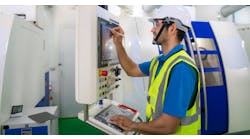Manufacturers rely on various assets to conduct their operations efficiently – though not all assets are equally important for the success of the business. Failure of some machines may not be consequential to your business, while the failure of some other machines could be detrimental to regular operations. You need to have an empirical understanding of the risks posed by each machine to sustain your business operations.
Criticality analysis – The systematic way to determine the risk posed by each asset of your organization is criticality analysis (CA). The primary objective of performing criticality analysis is risk management in facility operations. The major benefits of performing criticality analysis are:
• Better risk management in asset management;
• Improved maintenance strategy and schedules;
• Improved asset availability;
• High machine reliability;
• Better equipment uptime;
• Improved plant safety;
• Reduced unscheduled downtime;
• Improving inventory management; and,
• Optimizing resource utilization.
The outcome of criticality analysis will affect various facets of plant operation. Due to this, CA should be an integral part of plant operation strategy. Company-wide implementation of CA helps to improve efficiency and reduces plant operations costs.
The ideal approach to performing CA is the one developed by the U.S. military, which was part of the original failure-mode effects and criticality analysis (FMECA) method. This method helps to predict asset failure instead of performing reactive maintenance.
The procedure helps to determine the critical nature of assets using two different methods: qualitative and quantitative. The quantitative method involves calculating a Risk Priority Number (RPN) with data such as severity rates, component failure rates, and a detection metric.
The qualitative method eliminates the use of the detection metric, using just severity and likelihood rates to calculate the risk of assets.
Conducting criticality analysis is important to executing risk-adjusted action in plant operations. Following here are the most common mistakes that you need to avoid when performing criticality analysis.
Flawed objective – Many plant managers approach CA to improve the maintenance activities of their plants. The outcome helps to improve the maintenance strategy of their plants, but it should not be the primary objective. As noted, CA is a risk-management tool, and the result should be used to formulate risk-mitigation strategies for plant assets.
Asset risks present in a plant may be due to the inherent nature of the asset. A better maintenance strategy for such assets does not eliminate such risks. Another common risk present in manufacturing plants is the lack of equipment redundancy. Such risks have to be reduced after performing CA.
Maintenance and other benefits of CA should not be the reason to perform it: Risk mitigation is the objective, and other benefits of it are superfluous and should not be the focus of performing CA.
Wrong methodology – Just as CA with flawed objectives leads to subpar outcomes, using the wrong methodology to perform CA yields similar results. Criticality analysis can be performed with different methods. Beyond the FMECA method explained above, the Pareto principle and forced ranking are some of the methodologies that can be applied to perform criticality analysis. Each of these has drawbacks that make it unreliable for obtaining good results.
Using the Pareto principle for criticality analysis introduces a high level of subjectivity to the analysis. The operations manager rates assets according to the perceived criticality of the asset, thus losing objectivity in the analysis. The other method, forced ranking, assumes that there is a clear and distinct hierarchy of assets based on the risk profile. This results in unpredictable and unrealistic outcomes from the analysis thus performed.
The most suitable method for performing CA across industries is the FMECA method. It is best to rely on this method than to adopt other methods: it has a good track record of generating empirical outcomes that give reliable outcomes.
Qualitative vs. quantitative – The FMECA method has qualitative and qualitative ways of performing criticality analysis. The only difference between the two is the use of a detection metric to perform the analysis. Using either method yields a far better result than other CA methodologies.
In instances where it is difficult to obtain detection metrics, qualitative methods are better suited to perform CA. When detection metrics are readily available, always opt for quantitative methods. When performing qualitative methods, keep in mind the lack of detection metrics when you analyze the results.
The corrective actions that need to be done also need to incorporate the lack of detection metrics.
Maintenance frequency – Some asset managers use the result of criticality analysis to ramp-up asset maintenance. They assign higher maintenance-frequency for assets that are high on criticality. This is a flawed approach. The criticality analysis gives an idea about the risk profile of the asset and has very little correlation with the maintenance frequency for the asset. Increasing maintenance frequency increases the maintenance cost with no effect on the risk profile of the asset.
The primary objective of performing criticality analysis is to alter the risk profile of plant assets. CA helps minimize the risks of plant operations and stabilizes the volatility in plant operations. The primary objective of CA should not be hijacked for any other purposes. Conducting thorough criticality analysis should be part of risk mitigation strategies across industries.
Bryan Christiansen is the founder and CEO of Limble CMMS, a mobile CMMS software that helps plant managers organize, automate, and streamline maintenance operations.






